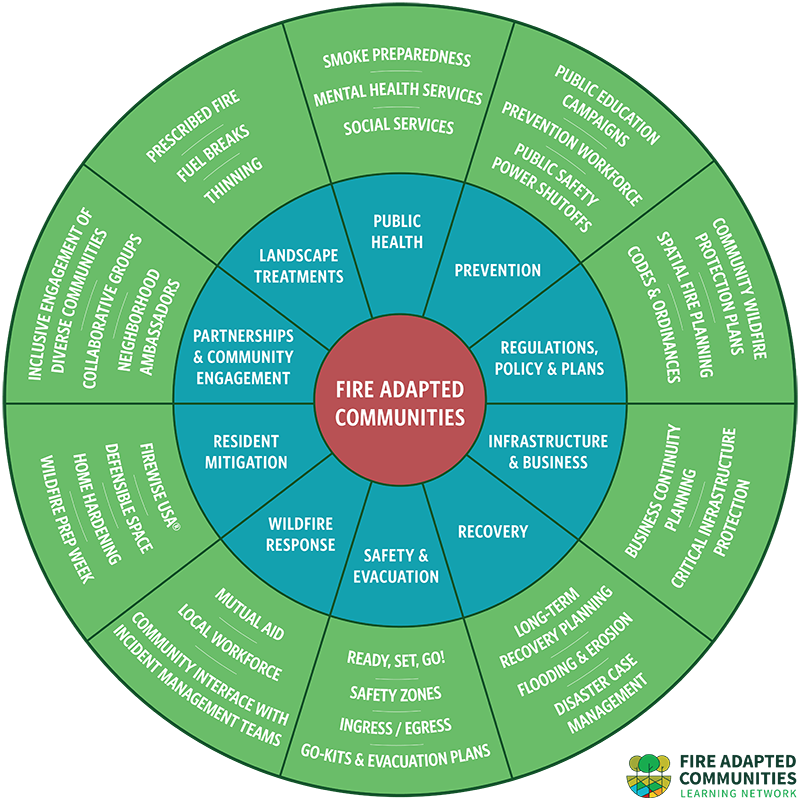Colorado Fire Adapted Communities
A Fire Adapted Community (FAC) is a community taking responsibility and implementing actions to reduce wildfire risk.

History of Fire Adapted Communities
The CSFS helps communities become fire-adapted. A Fire Adapted Community (FAC) is a community taking responsibility and implementing actions to reduce wildfire risk.
In 2005, the Quadrennial Fire Review promoted ‘Fire Adapted Human Communities’ as a solution to decreasing suppression costs, structure losses and fatalities.
In 2009, the Federal Land Assistance, Management and Enhancement (FLAME) Act initiated the National Cohesive Wildland Fire Management Strategy. The goals of this strategy were to create Fire Adapted Communities, create resilient landscapes, and improve wildland fire response and suppression.
There is a National Fire Adapted Communities program that provides information on how communities can become fire-adapted.
More information about the National Fire Adapted Communities program
Fire Adapted Communities Learning Network
The FAC Learning Network is another tool available to help exchange information about fire-adapted communities, managed by the Watershed Research and Training Center and The Nature Conservancy. The Network was “created to enhance networking and dialogue, and increase the sharing of learning and innovations related to community wildfire resilience. The FAC Learning Network includes local leaders, firefighters, land managers, business owners and others who are applying fire adapted community concepts across the United States” (FAC Learning Network website).
In 2014, the FAC Learning Network included 10 hub communities across the United States, three of which were in Colorado. These Colorado hub communities include the Coalition for the Upper South Platte, Firewise of Southwest Colorado and Summit County.
For more information, visit the Fire Adapted Communities Learning Network website.


